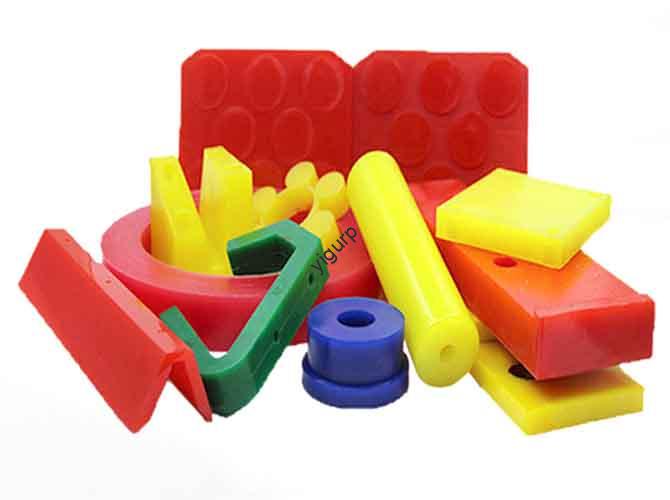High-temperature 3D printing has emerged as a game-changer in industries demanding durable, high-performance components. Unlike traditional manufacturing, it builds parts layer by layer using heat-resistant materials, solving long-standing challenges of creating complex structures for extreme environments. But how does it work, and where is it making the biggest impact? Let’s break it down.
1. Core Technical Principles: How High-Temperature 3D Printing Works
At its heart, high-temperature 3D printing combines specialized materials and precision molding processes to produce parts that withstand intense heat. Below is a clear breakdown of its two key pillars:
1.1 Material Selection: The Foundation of Heat Resistance
Not all materials can handle high temperatures—only those with high melting points, strength, and thermal stability qualify. The table below highlights the most common materials and their key traits:
| Material Type | Melting Point (°C) | Key Advantages | Typical Use Cases |
| Titanium Alloys | 1,668 | Lightweight, corrosion-resistant | Aerospace turbine blades, medical implants |
| Nickel-Based Alloys | 1,400–1,500 | High creep resistance at 800–1,000°C | Gas turbine components, combustion chambers |
| Stainless Steel | 1,400–1,450 | Cost-effective, durable | Automotive exhaust manifolds, energy sector parts |
1.2 Molding Processes: Precision Layer-by-Layer Building
Two dominant processes power high-temperature 3D printing. Both melt materials (powder or wire) and solidify them quickly—but they differ in energy sources and precision:
| Process | Energy Source | Key Parameter Controls | Pros | Cons |
| Laser Cladding | High-power laser | Laser intensity, scan speed, layer thickness | Fast, suitable for large parts | Higher porosity risk if parameters are off |
| Electron Beam Melting (EBM) | Electron beam | Beam current, vacuum level, layer height | Low porosity, high material density | Slower, requires vacuum chambers |
Why does precision matter? Even a 1°C deviation in temperature or 0.1mm error in layer thickness can cause defects like cracks or deformation—ruining parts for high-stress uses.
2. Key Applications: Where High-Temperature 3D Printing Solves Problems
High-temperature 3D printing isn’t just a novelty—it addresses critical needs in four major industries. Here’s how it adds value:
2.1 Aerospace: Surviving Extreme Heat
Aerospace engines operate at 1,000–1,500°C with high pressure and speed. Traditional manufacturing struggles to make complex parts like turbine blades without weakening them. High-temperature 3D printing:
- Creates blades with internal cooling channels (impossible with casting).
- Uses nickel-based alloys to resist creep (material deformation over time).
- Reduces weight by 20%, improving fuel efficiency.
2.2 Automotive: Boosting Performance
Modern cars need lighter, more efficient engines. High-temperature 3D printing makes:
- Exhaust manifolds that handle 900°C (reducing heat transfer to the engine bay).
- Turbocharger housings that are 30% lighter than cast parts.
- Customized parts for high-performance vehicles (no need for expensive molds).
2.3 Energy Sector: Stability in Harsh Conditions
Nuclear power plants and solar thermal systems require parts that last decades in high heat and corrosion. High-temperature 3D printing:
- Produces nuclear reactor components with stainless steel (resists radiation and 600°C heat).
- Makes solar thermal collector parts that withstand 800°C without warping.
- Lowers waste: 95% material utilization vs. 60% for traditional subtractive manufacturing.
2.4 Medical Industry: Biocompatible and Durable Implants
The human body’s internal temperature is 37°C, but implants (like artificial joints) need to handle long-term wear and biological reactions. High-temperature 3D printing:
- Uses titanium alloys (biocompatible, no rejection risk) for hip/knee implants.
- Creates dental implants with porous surfaces (helps bone grow into the implant, improving stability).
- Reduces surgery time: Implants are custom-fit to the patient’s anatomy.
3. Advantages vs. Challenges: Is High-Temperature 3D Printing Right for You?
To decide if this technology fits your needs, let’s compare its strengths and pain points:
3.1 Key Advantages (Why It’s Worth Investing In)
- Design Flexibility: Make complex shapes (e.g., internal channels, lattice structures) that traditional methods can’t.
- High Material Utilization: Saves 30–50% on material costs vs. machining (which cuts away excess material).
- Superior Performance: Prints match or exceed forged parts in strength—e.g., titanium alloy prints have 98% the tensile strength of forged titanium.
- Faster Prototyping: Test new part designs in weeks instead of months (no need for molds).
3.2 Critical Challenges (And How to Overcome Them)
| Challenge | Impact | Solution |
| High Material Costs | Nickel-based alloys cost \(50–\)100 per kg (vs. $5 per kg for standard steel). | Partner with suppliers for bulk discounts; use hybrid materials (e.g., steel-nickel blends). |
| Expensive Equipment | Industrial EBM machines cost \(500k–\)2M. | Start with smaller laser cladding systems (\(100k–\)300k) for low-volume production. |
| Process Complexity | 10+ parameters (temperature, speed, etc.) need precise control. | Use AI-driven software to auto-adjust parameters; train operators with certification programs. |
4. Yigu Technology’s Perspective
At Yigu Technology, we see high-temperature 3D printing as a catalyst for manufacturing innovation. Its ability to create high-performance, complex parts aligns with our mission to solve industrial pain points—from aerospace weight reduction to medical customization. We’re investing in AI-driven process control tools to simplify parameter management and lower defect rates. For small-to-medium businesses, we recommend starting with targeted applications (e.g., automotive prototyping) to balance cost and value. As materials become more affordable, we expect this technology to become mainstream in 3–5 years.
5. FAQ: Answers to Common Questions
Q1: Can high-temperature 3D printing be used for mass production?
A1: Yes, but it’s best for low-to-medium volumes (100–1,000 parts). For mass production (10,000+ parts), traditional casting may still be cheaper—unless the part’s complexity requires 3D printing.
Q2: How long does it take to print a high-temperature part?
A2: It depends on size and complexity. A small turbine blade (10cm long) takes 4–6 hours; a large exhaust manifold (30cm long) takes 12–16 hours.
Q3: Are high-temperature 3D printed parts safe for medical use?
A3: Yes—when using biocompatible materials (like titanium alloys) and certified processes. All medical prints must meet FDA or CE standards for sterility and durability.
